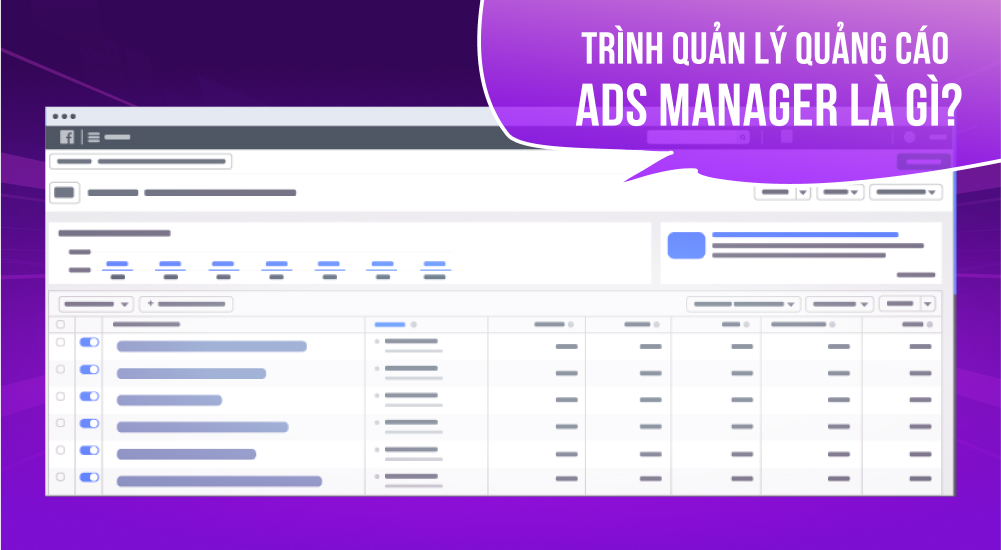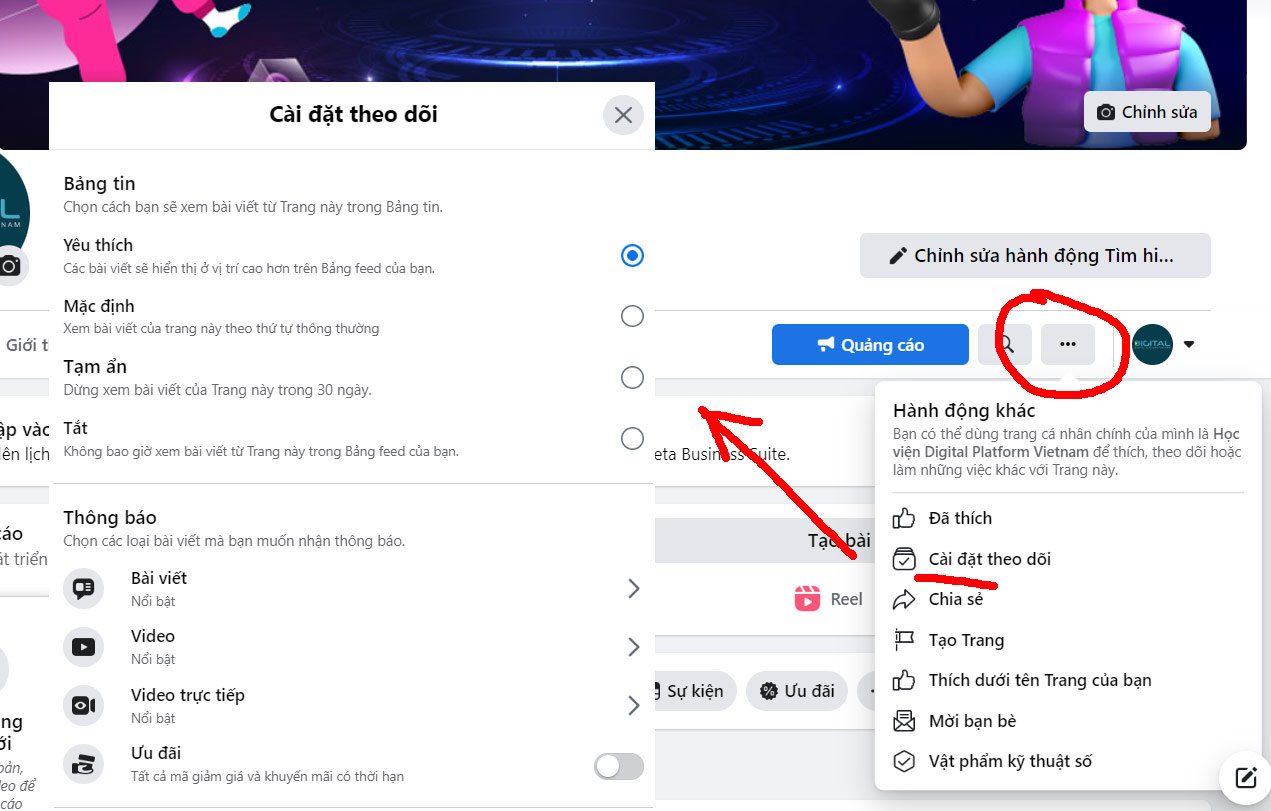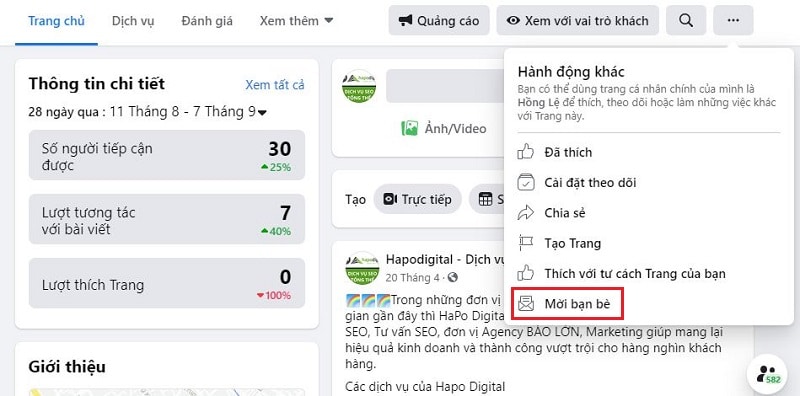Post map
ToggleIn the digital age, Meta Ads Manager has become an indispensable tool for businesses in the process of implementing advertising campaigns. For a campaign to be truly effective, understanding the conversion location and target-based actionable events in Meta Ads Manager plays an extremely important role. These factors not only help optimize advertising costs, but also open up opportunities to accurately reach the desired customer audience, thereby increasing conversion rates and ROI. To learn more about this matter, follow this Article by SOC LUA !
Conversion locations in Meta Ads Manager

What is a conversion location?
A conversion location refers to the place where you want your audience to perform the desired action after viewing your ad. This could be making a purchase on your website, sending a direct message via Messenger, or installing a mobile app. In other words, the conversion location represents the ultimate “destination” that businesses expect when running ads.
For example, if your goal is to increase online sales, the conversion placement should be Website. Conversely, if you want to create more conversations with customers, the appropriate placement would be Messenger or Instagram Direct. For app development businesses, the ideal Facebook Ads Conversion Position is an App, customers can download and install it directly.
Common types of conversion locations
In Meta Ads Manager, businesses can choose from several conversion locations depending on their campaign objectives:
- Website: The most common conversion location, especially in e-commerce. All actions such as purchases, form submissions, or account registrations on the website can be tracked.
- Mobile App: For tech companies, startups, or gaming businesses, promoting an app and increasing downloads is the main objective. This location tracks app installs and in-app actions.
- Messenger / Instagram Direct / WhatsApp: Channels for direct interaction with customers, suitable for consultation, customer care, and closing sales.
- Offline Store: Designed for retail businesses or physical store chains, where the goal is to drive customer visits and in-store purchases.
The role of choosing the right conversion location
Choosing the right conversion location is crucial to the overall campaign. First, it ensures the advertising campaign aligns with actual business goals, avoiding wasted budgets. Second, an accurate location helps Meta’s algorithm optimize ad delivery, reaching the users most likely to take action. Third, collecting accurate data from the correct conversion location allows businesses to assess performance and improve campaigns. Finally, choosing the right location enhances ROI (return on investment), maximizing profitability relative to ad spend.
Available events by campaign objective
What is an ad event?
An event in Meta Ads Manager is defined as a specific action taken by users and recorded by the system. These actions may include “Add to Cart,” “Sign up for consultation,” “Complete purchase,” or simply “Watch video.” Each event reflects customer engagement and behavior, helping businesses tailor their campaigns accordingly.
Types of events by objective
Awareness objective
For this group, events revolve around reach and visibility. Meta Ads Manager tracks metrics such as impressions, reach, and ad frequency. This is the first stage of the marketing funnel, suitable for building brand awareness or launching new products.
Traffic objective
When the goal is to drive users to a website or another online platform, tracked events include link clicks, website visits, and even time spent on site. This is particularly important for businesses seeking to increase landing page visits for product exploration.
Engagement objective
This objective focuses on creating stronger connections with customers. Events may include likes, shares, comments, video views, or messages. Engagement is the top choice when aiming to build a community and expand brand presence.
Leads objective
Here, the key event is when customers submit their information. Common events include filling out registration forms, submitting contact details, or signing up for consultation. This objective is often applied in industries such as real estate, education, finance, or B2B services.
Sales objective
For e-commerce businesses, this is the most decisive goal. Related events include adding products to cart, initiating checkout, and completing purchases. Accurately tracking these events helps businesses determine whether campaigns are directly generating revenue.
App Promotion objective
For app promotion, key events are app installs, new account registrations within the app, and in-app purchases. These are essential metrics for measuring the effectiveness of mobile app campaigns.
Standard events and custom events
In Meta Ads Manager, businesses can choose between Standard Events and Custom Events. Standard Events are predefined by Meta, such as “Purchase,” “Add to Cart,” or “Lead.” Custom Events, on the other hand, are defined by businesses to better suit their needs, such as “Survey completed” or “Watched 80% of video.” Combining both types allows businesses to leverage Meta’s system while creating flexibility tailored to their goals.
How to select conversion locations and available events by objectives in Meta Ads Manager?

Based on business objectives
Every business has different goals at different stages. If the objective is to increase sales, the conversion location should be set to Website with the event “Purchase.” If the objective is to collect leads, choose Lead Form with the event “Lead.” For tech businesses looking to increase app downloads, the most suitable location is App with the event “App Install.”
Based on customer behavior
Customer habits also influence the choice of location and event. For example, if customers are familiar with online shopping, Website is the ideal location. If customers prefer direct consultation, Messenger or WhatsApp will be more effective. For younger audiences who frequently use smartphones and apps, app promotion will result in higher conversion rates.
Based on budget and campaign scale
Advertising budgets also determine choices. With a larger budget, businesses can test multiple locations and events simultaneously for optimization. On the other hand, with limited budgets, it’s best to focus on one or two high-ROI events to avoid resource fragmentation.
Notes when setting up conversion locations and events
Install Meta Pixel and Conversions API
To track and record data accurately, installing Meta Pixel on the website is mandatory. Pixel records user actions, which helps optimize campaigns. Additionally, implementing Conversions API enables data to be sent directly from the server to Meta, increasing accuracy and reducing data loss due to cookie restrictions.
Avoid selecting the wrong event
A common mistake is choosing events that don’t match the stage of the marketing funnel. For example, if the website has low traffic, setting the event to “Purchase” will make it difficult for the algorithm to optimize, resulting in ineffective campaigns. Instead, it’s better to start with closer events such as “Add to Cart” or “View Content.”
Continuous testing and optimization
Advertising campaigns rarely work perfectly from the start. Businesses must constantly monitor event performance in Ads Manager, while running A/B tests to compare the effectiveness of different locations and events. Continuous optimization will gradually improve campaign performance.
Comply with Meta’s policies
Meta enforces strict rules on content and data usage. When setting up events, businesses must avoid violations such as advertising restricted products, using sensitive content, or collecting user data without transparency. At the same time, ensuring customer data safety and privacy is essential to build trust and maintain brand credibility.
Through this article, Sóc Lửa has shared the most important insights on available conversion locations and events by objective in Meta Ads Manager. Hopefully, you can apply this knowledge to your campaigns to achieve the best results.
Frequently Asked Questions
Businesses should base their decision on business objectives, customer behavior, and campaign budget. For example: to increase sales, choose Website + Purchase event; to collect leads, choose Lead Form + Lead event.
Yes. Choosing the wrong event may cause the ad delivery algorithm to misfire, making campaigns less effective, wasting budget, and making it harder to measure true performance.



